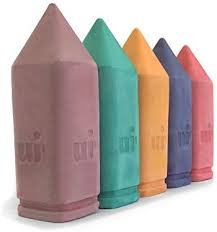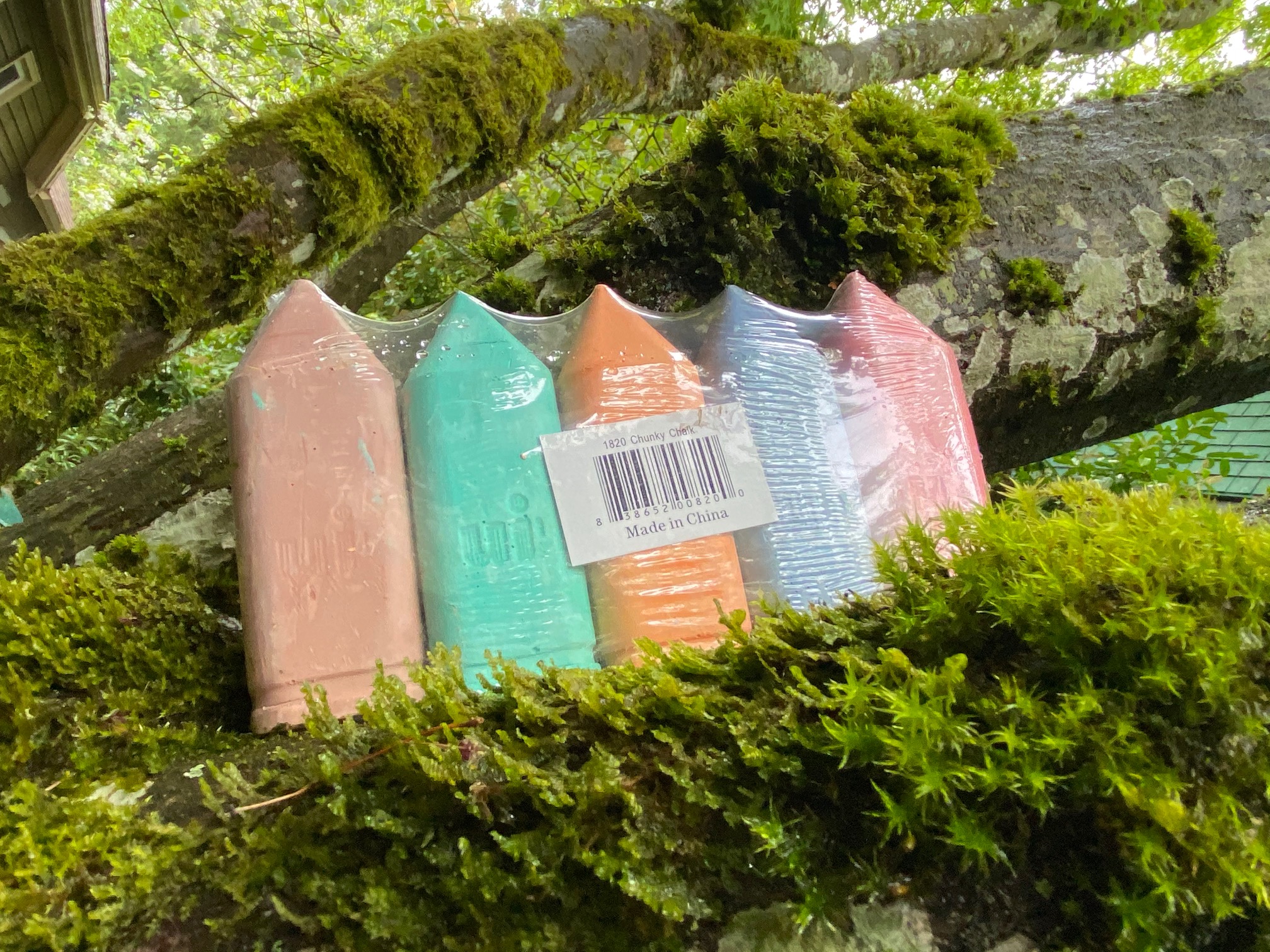Urban Infant (UI) Chunky Sidewalk Chalk, “sidewalk not included” (Canada): Lead-free, Cadmium-Free!
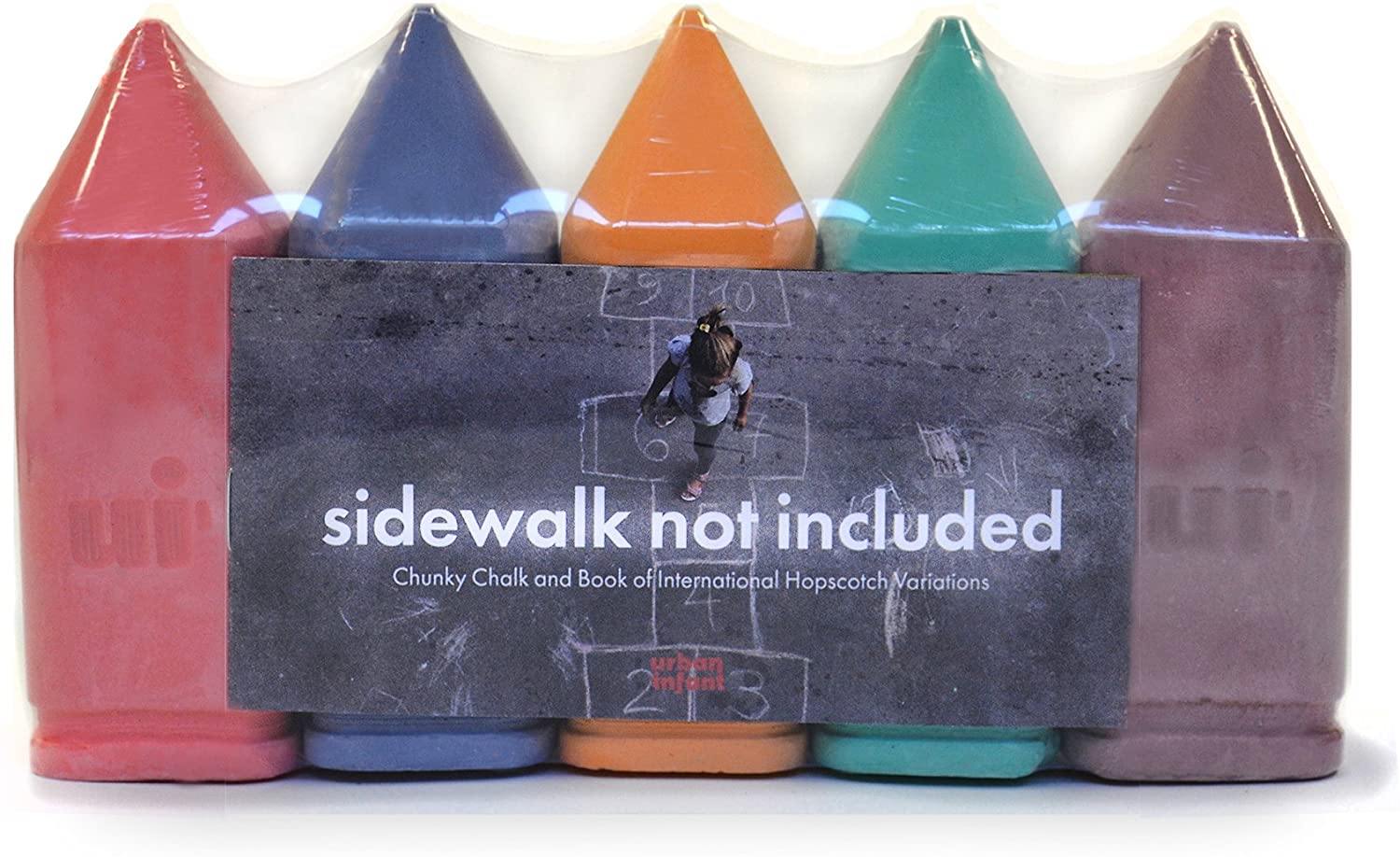
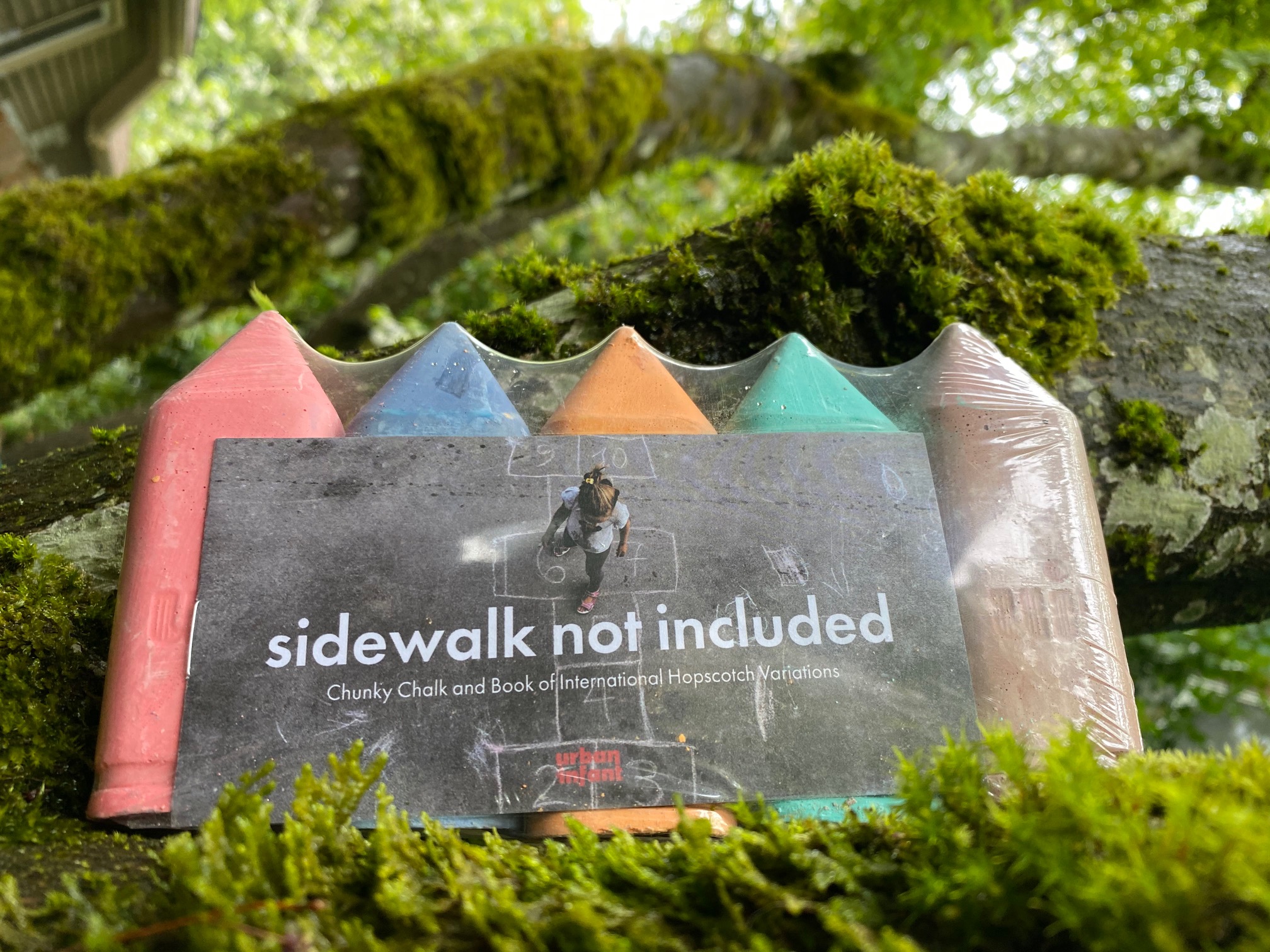
 Urban Infant (UI) Chunky Sidewalk Chalk
Urban Infant (UI) Chunky Sidewalk Chalk
This chalk was sent to me by a reader, but without any accompanying note, so I want to thank you for sending it in — whoever you are! 🙂 While the product is “Made in China”, it appears this might a Canadian brand of sidewalk chalk, as I could not find it available for sale online anywhere in the United States, only on Amazon Canada [where it is currently “out of stock”]. Please continue reading below the test results for a narrative summary of considerations regarding chalk.
XRF test results for the chalk pictured here.
#1) Pink / red chalk stick:
- Barium (Ba); 1,965 +/- 484 ppm
- Iron (Fe): 919 +/- 154 ppm
#2) Blue chalk stick:
- Barium (Ba); 2.364 +/- 760 ppm
- Copper (Cu): 194 +/- 85 ppm
- Iron (Fe): 573 +/- 223 ppm
#3) Orange chalk stick:
- Barium (Ba): 2,032 +/- 468 ppm
- Iron (Fe): 901 +/- 150 ppm
#4) Green chalk stick:
- Barium (Ba); 1,710 +/- 553 ppm
- Copper (Cu): 193 +/- 63 ppm
- Iron (Fe): 1,092 +/- 187 ppm
- Chlorine (Cl): 3,806 +/- 2,471
#5) Brown chalk stick:
- Barium (Ba); 2,349 +/- 723 ppm
- Selenium (Se): 32 +/- 20 ppm
- Iron (Fe): 776 +/- 225 ppm
Continue reading below to better understand the above readings.
Important Note:
This sample of children’s sidewalk chalk – entirely free* of the most common metallic toxicants found in consumer goods (Lead, Mercury, Cadmium, Arsenic, and Antimony) – is an interesting find! Historically, due to the very nature of chalk (as a Calcium-based product), the chalk itself that is used to make these kinds of products has often tested positive for varying levels of Lead contamination. Additionally, historically the colorants used to dye the chalk often contain varying levels of metallic toxicants as well — adding up to some pretty scary examples of “children’s sidewalk chalk” that I’ve tested over the years! Please do note the high level of Chlorine found in the green chalk. While I am not an expert about Chlorine, I expect that is a fairly unusual level to find – as it is not something I find very often (outside of the realm of plastic toys).
What did you use to test this chalk?
* Testing was conducted using a high-precision XRF instrument designed to detect metals in consumer goods down to single-digit parts per million (ppm). All XRF tests were done for at least 60 seconds each, and multiple tests were done for each color chalk, to ensure accuracy, reliability, and repeatability of the results reported above. The XRF instrument used for the testing reported about on this blog is the same instrument used by the United States CPSC (Consumer Products Safety Commission) to test for toxicants in children’s toys and other newly-manufactured items intended to be used by children.
Is XRF testing good enough for something like chalk?
When looking for the presence (or absence) of heavy metals, high-precision XRF testing is the “gold standard” for testing consumer goods intended for use by children. high-precision XRF testing detects metals down to levels of single-digit parts per million (ppm); most consumer goods are only considered unsafe (from a heavy metals perspective) if these metals are detected in double-digit parts per million (base hazard levels range from 40 to 90 ppm, depending on which metal you are looking at.)
Unfortunately, chalk is one of those products that is frequently ingested by young children and – in my opinion – this means it really should be regulated with food standards in mind (not toy or consumer goods standards). Food is generally considered unsafe if levels of heavy metals are found in the parts per billion range (not parts per million); even a high-precision XRF instrument simply does not have that level of sensitivity. To determine safety of a product that might be ingested (such as foods, vitamins & supplements, etc.), laboratory testing [equipment and methods which are designed to be able to test down to single- and double-digit parts per billion) is required]. If digestive testing (done in a lab) were done, it is possible that very low trace amount of heavy metals might be detected, even though the chalk effectively tests negative for these heavy metals when using XRF technology.
In conclusion:
At first pass, this appears to be an excellent chalk brand – as no Lead, Cadmium, Mercury, Arsenic or Antimony was detected using high-precision XRF technology. However, if you have a child who is likely to ingest items like chalk or crayons, please use any of these products sparingly and always supervise very carefully to limit potential ingestion (especially in the absence of lab testing [down to single digit ppbs] being done on a product that might be ingested.)
As always, thank you for reading and for sharing my posts. Please let me know if you have any questions.
Tamara Rubin
#LeadSafeMama
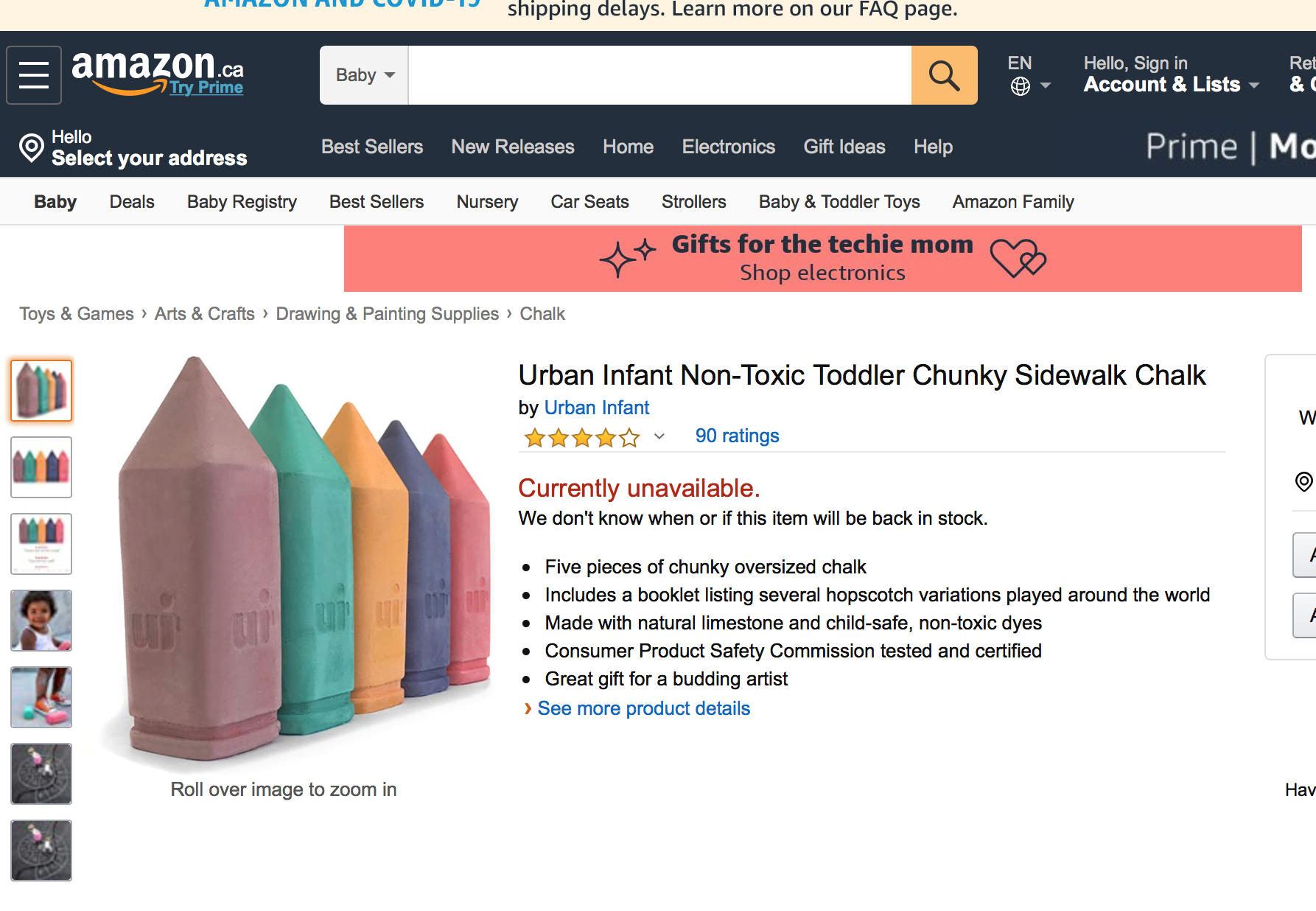
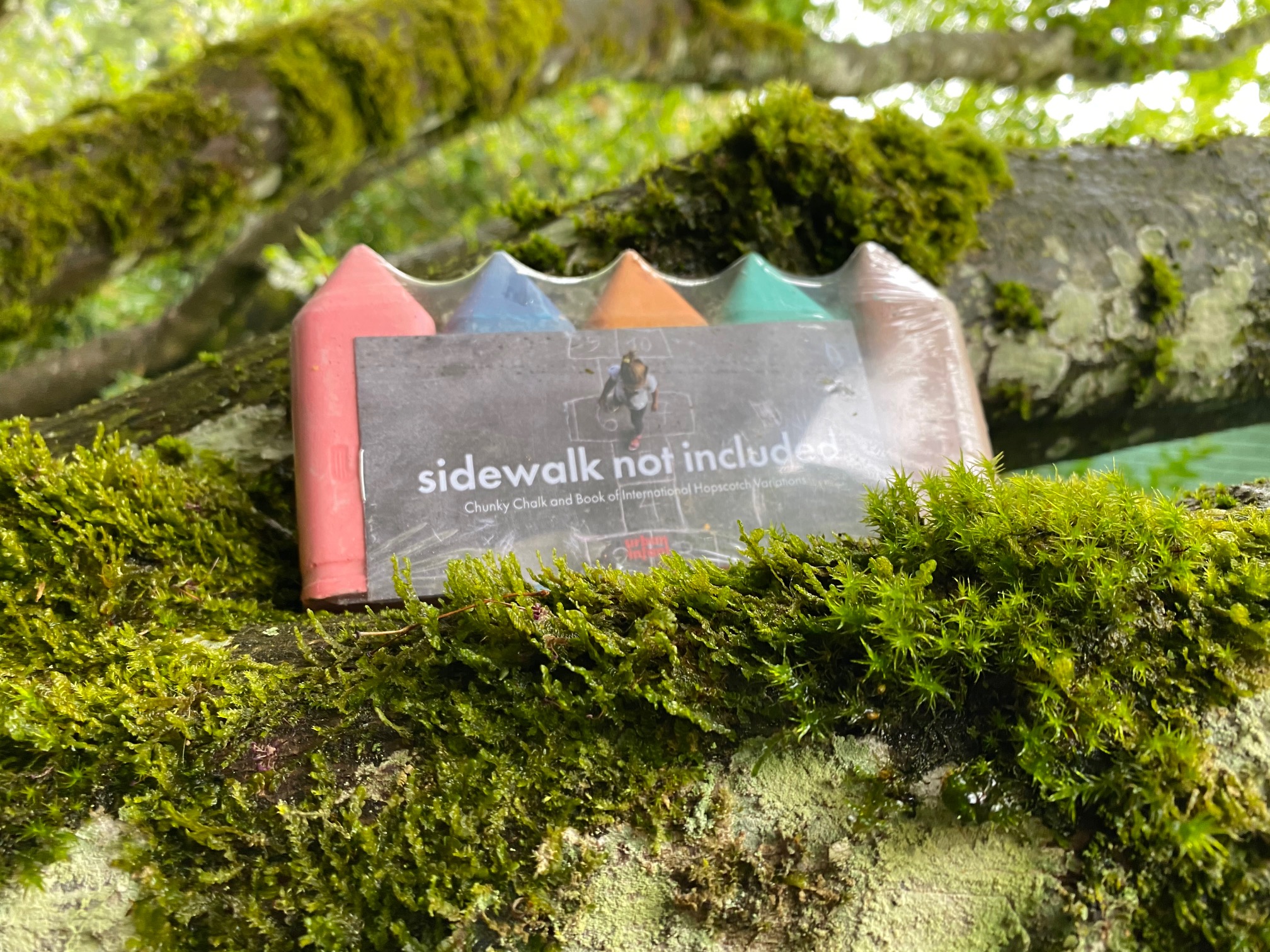
Never Miss an Important Article Again!
Join our Email List


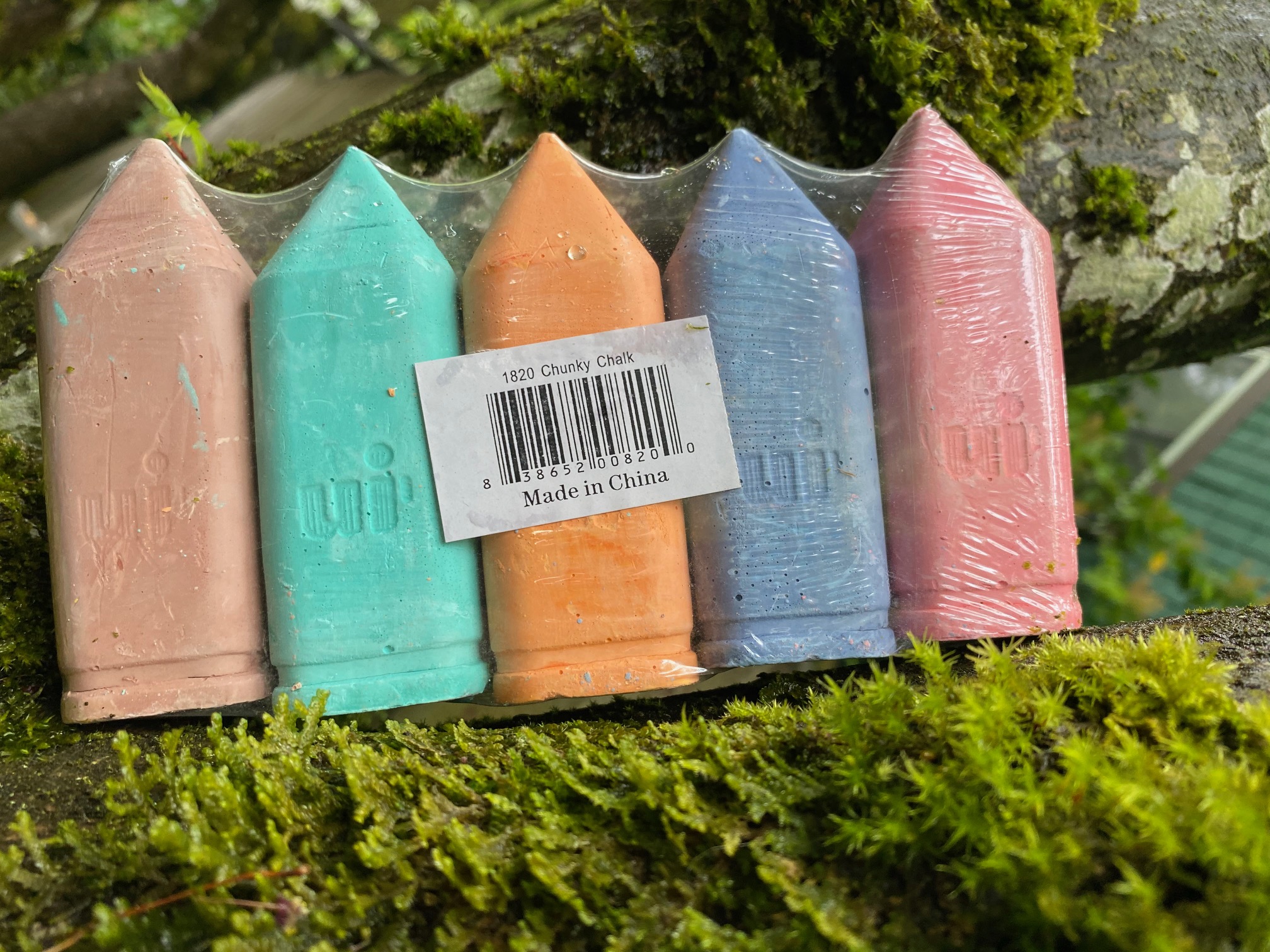 Urban Infant (UI) Chunky Sidewalk Chalk
Urban Infant (UI) Chunky Sidewalk Chalk